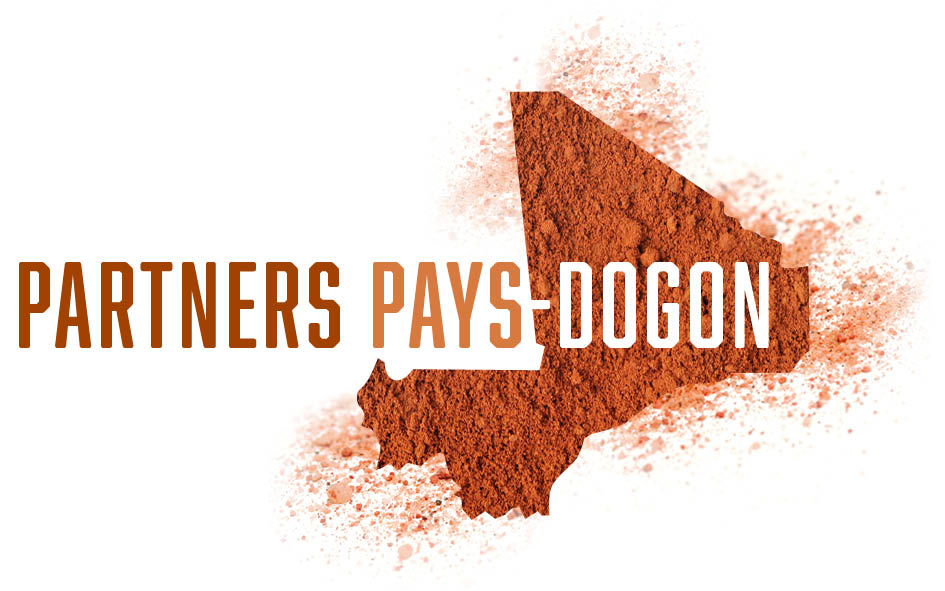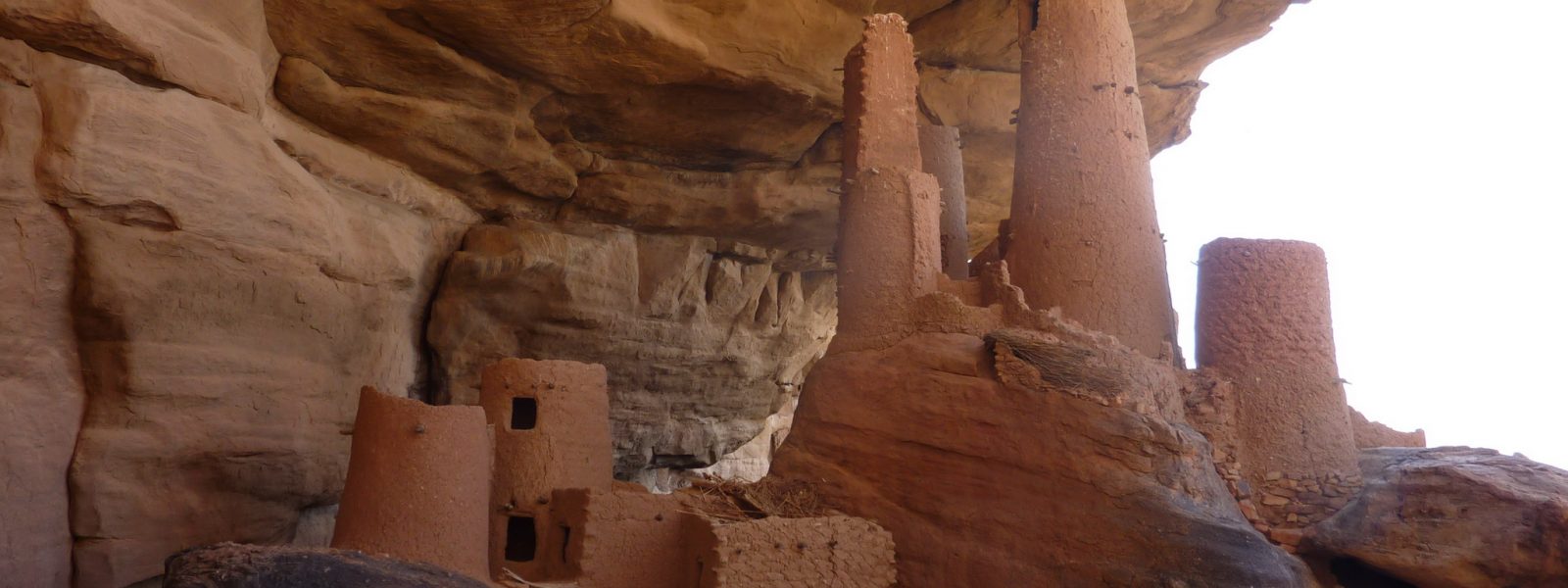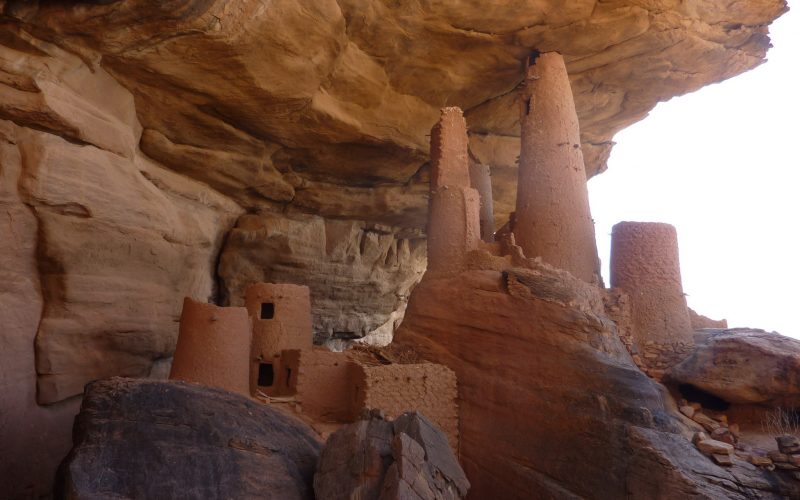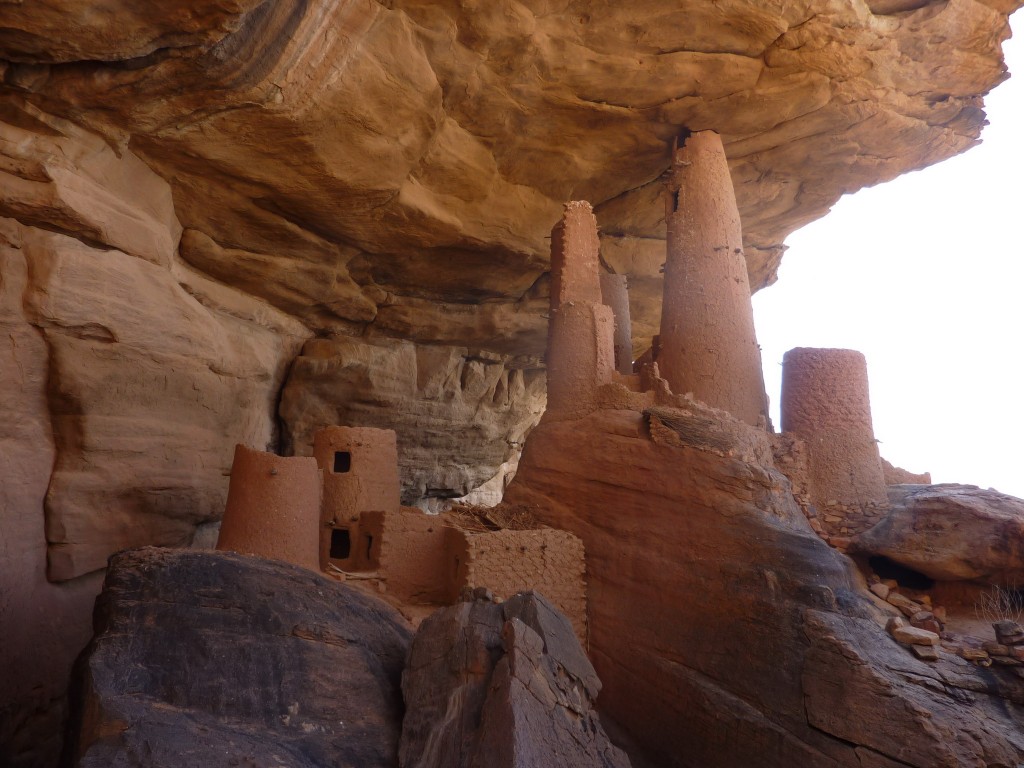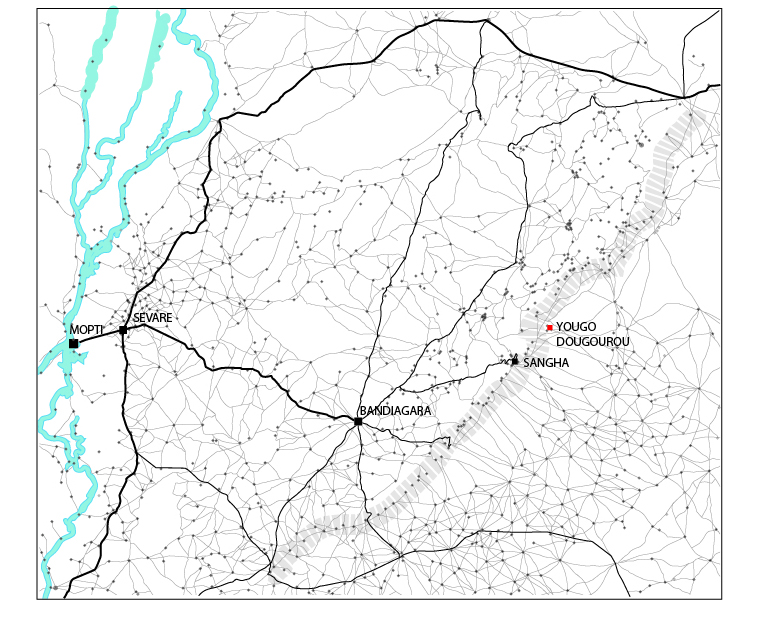The Cliff of Bandiagara (Land of the Dogons) was inscribed on the List of World Heritage properties in 1989. It was inscribed as a cultural and natural site on the basis of criteria V and VII, and is one of the largest mixed sites inscribed in the World Heritage List of UNESCO. It extends over 4,000 km2 and, as such, is an area where around 500.000 people are living in 289 villages. Nando is one of these villages. Among them, Nando holds a special status due to the unique mosque which lies in the centre of the village.
The land of the Dogon lies south of the river Niger not far from Mopti and Djenne. The region is composed of three zones: the plateau, the cliffs and the lower plains. The plateau rises like an immense fortress to a height of approximately 300 metres above surrounding plains. It is delimited by the Bandiagara escarpment, a cliff of more than 200 km long, which runs from southwest to northeast. Successive waves of immigration have populated the area. Over the ages peoples from different horizons had to share, not often without harm or conflicts, the same territory. Today the originality of Dogon country resides in its ethnic, cultural and linguistic diversity. A homogeneous Dogon society does not exist. Like so many other farming societies, the Dogon have no centralized power structure. Political and religious authority belong to the village elders. In line with its diversity, each region of the Dogon land has its own traditions. Variants in belief, myth and history abound.
Just a bit free from the Bandiagara cliffs lie the villages of Yougo; Yougo Piri, Yougo Na and Yougo Dogorou. They are among the most beautiful villages of the Unesco list. The overwhelming awareness of time manifested by presence of the well kept Tellem houses and tombs easily included in the culture and architecture of the Dogon village. Yougo Dogorou has a special status and meaning for the whole Dogon land, this unique cultural position of the villages is based on its role. The society of the masks is based in the village and all the important feasts like de Sirigi every 60 years and the Dhama start here. All funerals for the Hogons, the wholy man in the Dogon society, are held in the village and they are tombed in the highly placed caves.
From our first trips since 1972 it was clear that it is extremely difficult to approach the villages of Yougo because of their isolated place. Since 1981 (see picture, on the road from Sangha, passing by Koundou heading for Yougo with Herman Haan) we started making water dams for providing drinking water near to the village. Our last water project is from 2009 in Yougo Na. There have been several plans for renovating parts of the village.
The project presented in this document has been prepared by the Foundation Dogon Education in collaboration with LEVS architects Amsterdam, The NAi (Architectural Institute of the Netherlands) and the Mission Culturelle de Bandiagara, the decentralised government structure in charge of the protection and conservation of the Unesco site. The project will be supported in the future by several partners listed in the credits. The start of the project is an response to the concerns expressed by the leaders of the village Yougo, the chief of the region Sangha and several other villages and inhabitants of the land of the Dogon. Due to its cultural position Yougo will never be abandoned but that’s not a guarantee that quality of the village will continue without support.
